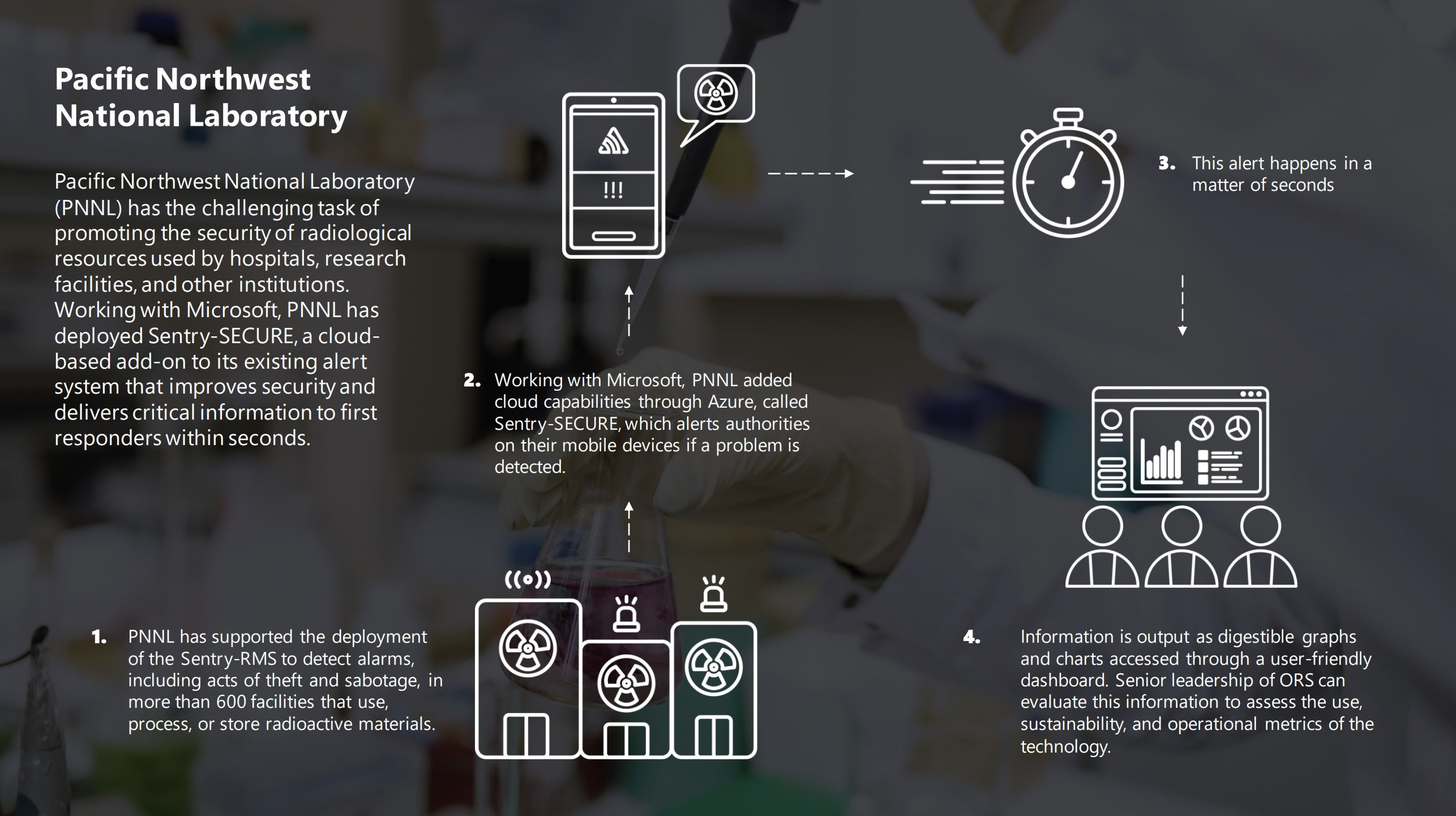Pacific Northwest National Laboratory innovates to secure the nation’s radioactive materials
Downloads
Resources
Products
Many organizations—from hospitals to universities to pharmaceutical companies—use radioactive materials for medical treatment, research, or sterilization. But doing so creates the risk of a radiological incident should there be an attempt to sabotage or steal the radioactive material.
To help notify first responders in the event of such an incident, Pacific Northwest National Laboratory (PNNL) supported the Office of Radiological Security in the development of the Sentry Remote Monitoring System (Sentry-RMS). Sentry-RMS security sensors are placed near the radioactive materials, monitoring for potential security issues and notifying the right authorities should one occur.
Now five years old and deployed in more than 600 sites across all 50 states, the Sentry-RMS is effective, but not a total solution. Properly alerting responders to a radiological threat scenario requires human intervention to assess the situation and initiate an appropriate response. When an alarm goes off, someone often must make a phone call to inform the appropriate stakeholders to initiative a response. “There’s a time delay – and a chance of human error,” says Brandon Gorton, a cybersecurity lead for PNNL. “By expanding the capabilities to enhance situational awareness, we are buying a lot of time for first responders and other stakeholders responsible for adjudicating the alarm.”

A steep technical hill to climb
Finding and deploying a new solution was challenging. PNNL had some 600 technical requirements within cyber, operational, and information-security domains.
“We faced a lot of challenges because of the number of domains we touch,” says Gorton. “They all have different hardware and infrastructure of different ages. We wanted to be able to deploy new technology to these organizations without deploying new hardware to each location.”
PNNL developed a cloud-based, information sharing system built on Microsoft Azure. Called Sentry-SECURE, it is a new feature to a deployed Sentry-RMS. Each unit operates independently from all other units, allowing for the use of shared infrastructure without proliferating risk amongst the users.
Putting Sentry-SECURE in the cloud reduces deployment and maintenance costs, gives PNNL immense agility for adding new features, and helps stitch together the disparate IT systems of Sentry-SECURE users.
“An alert now can be authenticated and delivered to the proper authorities in just a few seconds. That’s a powerful capability.”
Security in depth
In addition, Azure security features provide in-depth protection for the Sentry-SECURE system, including authentication, federation of identities, and advanced threat protection.
“Some of the security benefits of Sentry-SECURE are very exciting,” says Gorton. “An alert now can be authenticated and delivered to the proper authorities in just a few seconds. That’s a powerful capability. And if anyone tries to spoof or hack the alarm data, they are going against the full force of proven cryptographic solutions.”
By automating the notification process, Sentry-SECURE makes it easier for responders to react to and coordinate the deployment of resources across private, government, and commercial resources, as needed. For example, imagine a city with Sentry-SECURE sites is hosting the Olympics or a major concert. “Law enforcement agencies might want to increase the situational awareness of radiological assets within the region,” Gorton says. With user-friendly features like the ability to swipe a finger across a screen to see the status of all monitored sites, stakeholders can stay informed on the security of high-value assets.
Recommended Videos
Argonne National Laboratory reimagines scientific collaboration during a global pandemic
See how Argonne scientists used mixed reality technology to shift experiments from their labs to their living rooms.
Explore our Technology Explainer Video page for overview videos explaining the emerging technology of today, including AI, Machine Learning, and more.
